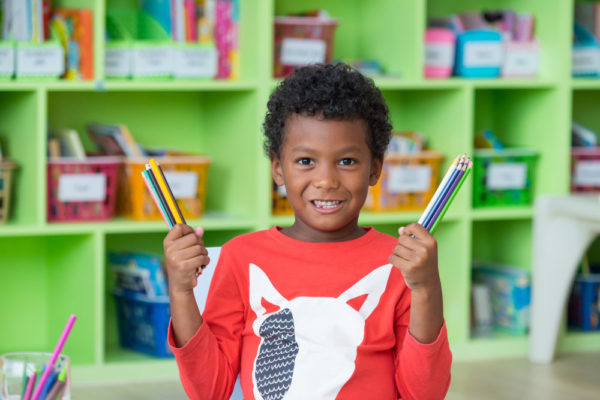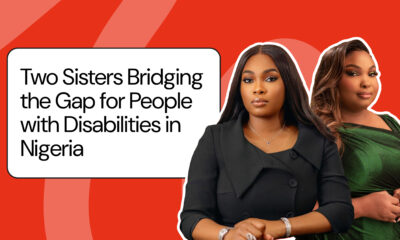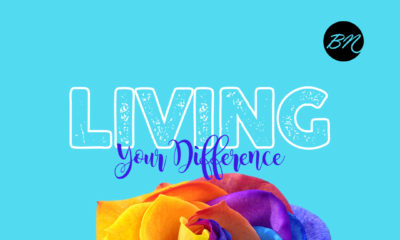Features
Love without Boundaries with Bukola Ayinde: Tips For Creating a Truly Inclusive School
 Inclusive Education, as I have defined in my previous articles, simply means that all students attend and are welcomed by mainstream schools in age-appropriate, regular classes and are supported to learn, contribute and participate in all aspects of the life of the school.
Inclusive Education, as I have defined in my previous articles, simply means that all students attend and are welcomed by mainstream schools in age-appropriate, regular classes and are supported to learn, contribute and participate in all aspects of the life of the school.
Some school owners have approached me to find out how they can introduce inclusive education into their school system. I would say that the two key things in inclusive education is showing empathy and being open to embrace change.
When I was looking for a school for my daughter, Nimi, that was the main thing I was looking out for. I was looking out for a school that would show love and acceptance. A school that would be open to try something new.
Every morning while taking my second daughter to school, I would drive pass another school. I noticed that each morning when I drove by, there was a bus from an orphanage in front of the school that would drop off some kids. I was impressed by this. I said to myself, if this school could accept children from an orphanage then their empathy quotient may be higher than most.
I approached the school and spoke with the school owner. She was warm and welcoming. She told me she had admitted a child with autism in the past but she had never taken someone with cerebral palsy. She didn’t even have an idea about it but she said she was open to trying something new.
It was a Friday, I told her to do her research over the weekend and I would bring my daughter on Monday for a meeting so that she could get to meet her.
Truly she did her research and got some information about cerebral palsy and I filled in the gap. I brought my daughter for an interview and she accepted her.
I decided that my daughter will start with three times a week and I would see how it goes from there.
The day Nimi started school, her classmates presented her with a welcome handmade card. The proprietress told me that the week before Nimi resumed to the school, the teachers had taught the other children about differences, empathy and acceptance. Indeed, I was impressed.
Today, our three days experiment has paid off. Now, my daughter goes to school five times a week just like every other kid. She also takes part in extra curriculum activities. For me it doesn’t matter if she can’t do it as well as other kids, even if she is just among the cheerleaders, that’s okay. It is called social integration. The most important thing is we have achieved inclusive education, in the true sense of it.
To create an inclusive school, the following tips may come in handy:
1. The leadership of the school needs to get proper information. You do not necessarily need to go to a formal school to acquire this. You can have a chat with professionals on the field and also do your own research through reliable websites on the internet.
2. Train your teachers on how to work with children with disabilities or with special learning needs. You can liaise with companies, consultants and nonprofit organisations to accomplish this.
3. Teach the children about disability, accepting differences and showing empathy. This may be done through class reading time; the children can read story books with characters who have disabilities. Encourage them to ask questions and answer the questions truthfully as best as you can. It can also be done by creating a disability awareness day or including disability awareness into your diversity celebration day.
4. It is very important to educate the parents of your students before introducing inclusive education. This would be a better approach than introducing inclusive education then explaining your actions later on.
5. Create a handbook or a guide for all workers; both teachers and non-teachers. It is best to state out in full, what is expected from everyone in relation to your special needs students. It is also important to create a more robust missions statement so that no one is in doubt about what the school stands for. For example, you may want to introduce into your missions statement, equality, fairness and justice for all students.
6. The school may want to assess its building to determine how accessible it is for children with disability. The school may need to provide ramps for easy of using wheelchairs.
If the school is not designed to accommodate a lot of changes, this should not be a major issue because as long as you are open to experiment or to show empathy, there would always be a way around it.
I was told about a school in Lagos Nigeria where form 6 classes in a secondary school were located at the third floor of the school building. A young boy with cerebral palsy who could not walk was made to crawl on the staircase every morning when he got to school and in the afternoon when going home. He couldn’t even dare to come down at lunch time. Not forgetting that his uniform will get dirty every morning. The experience as a whole is dehumanising for anyone to go through that five times a week, twenty times a month.
I strongly believe that the leadership of that school, especially the principal has a wrong value system for human life. The least they could have done was to provide a stretcher for the boy to lie down and two men carry him to his class just like how wounded footballers are carried off the field. They could have even encouraged some of his classmates to help with carrying the stretcher thereby teaching them about helping others. The principal could also have moved one arm of class 6 to the ground floor.
7. The school may need to check out their restrooms and answer some cogent questions? Can this rest room accommodate a wheel chair? If not, can I have space for a changing table or bed? How do I get to monitor what goes on in the restroom? There have been some cases of caregivers molesting children with disabilities in the process of assisting them in the restroom. This brings me to the next point.
8. For schools that can afford this, it is wise to install CCTV all over the school and even in the open space of the restrooms (this is not inside the toilet cubicle itself). Where the CCTV is monitored and feedbacks are given to teachers, non-teaching staff and students, it will help to ensure that everyone is mindful of their actions.
This list is not exhaustive but like I have said earlier, the most important thing is showing empathy and a willingness to embrace change.
Inclusive education should be the goal of any right-thinking society who understands that we do not live in a perfect world. There are no special communities for teenagers or adults with special needs. The best time to integrate them into the society is at infancy. The best place to do so is in our mainstream schools.
Next article would talk about guidelines for admitting children with disabilities and how to create a conducive classroom experience for your special needs students.
Photo Credit: © Weedezign | Dreamstime.com





















